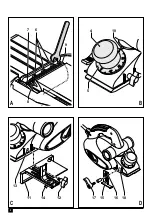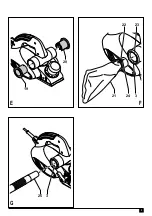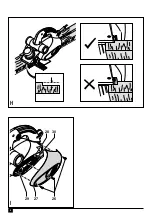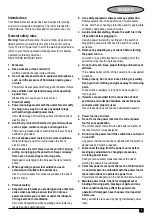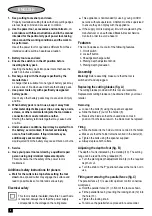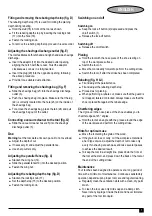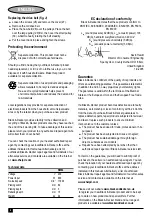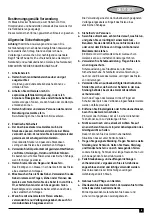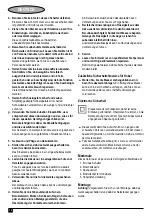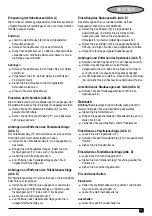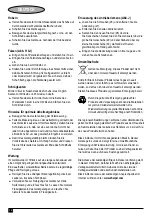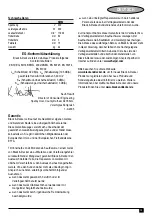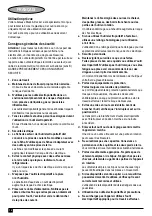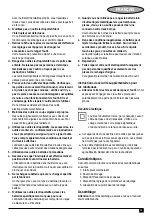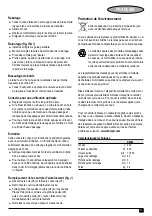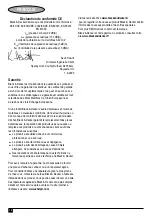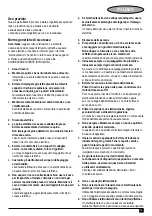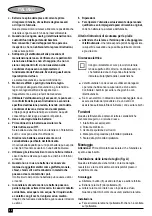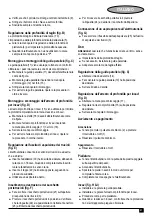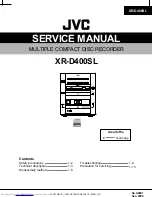
7
ENGLISH
Fitting and removing the rebating depth stop (fig. D)
The rebating depth stop (15) is used for limiting the planing
depth during rebating.
Hold the stud (16) in front of the tool as shown.
Fit the rebating depth stop by inserting the locking knob
(17) into the hole (18).
Fasten the locking knob.
To remove the rebating depth stop proceed in reverse order.
Adjusting the shavings discharge outlet (fig. E)
The tool facilitates both left-hand and right-hand side shavings
discharge.
Insert the adaptor (19) into the desired outlet opening,
aligning the notch with the recess. Twist the adaptor
clockwise as soon as it is fully inserted.
Insert the plug (20) into the opposite opening, following
the above procedure.
Provide for a suitable dust extraction.
Fitting and removing the shavings bag (fig. F)
Slide the shavings bag (21) into the shavings discharge
outlet (3).
Push the shavings bag into place. Make sure that the lug
(22) is correctly located into the hole (23) on the inside of
the shavings bag.
To remove the shavings bag, press the tab (24) and pull
the shavings bag out of the outlet.
Connecting a vacuum cleaner to the tool (fig. G)
Slide the vacuum cleaner hose (25) into the shavings
discharge outlet (3).
Use
Warning!
Let the tool work at its own pace. Do not overload.
Adjust the depth of cut.
If necessary, fit and adjust the parallel fence.
Use sharp cutters only.
Adjusting the parallel fence (fig. C)
Slacken the wing nut (14).
Slide the parallel fence(10) into the desired position.
Fasten the wing nut.
Adjusting the rebating depth stop (fig. D)
Slacken the locking knob (17).
Set the depth stop (15) to the desired position.
Fasten the locking knob.
Switching on and off
Switching on
Keep the lock-off button (2) depressed and press the
on/off switch (1).
Release the lock-off button.
Switching off
Release the on/off switch.
Planing
Hold the tool with the nose piece of the shoe resting on
top of the workpiece surface.
Switch the tool on.
Move the tool steadily forward to perform the cutting stroke.
Switch the tool off after the stroke has been completed.
Rebating (fig. H & I)
Fit and adjust the parallel fence.
Fit and adjust the rebating depth stop.
Proceed as for planing.
When performing a rebate cut, make sure that the guard is
not trapped, twisted or blocked. Always make sure that the
shoe is placed flat against the rebate edge.
Chamfering edges
The V-groove in the nose piece of the shoe enables you to
chamfer edges at 45° angles.
Hold the tool at an angle with the groove around the edge
of the workpiece and perform the cutting stroke.
Hints for optimum use
Move the tool along the grain of the wood.
If the grain is cross or curly, or if the workpiece material is
a hard type of wood, adjust the depth of cut to take only
a very thin shaving at each pass and take several passes
to achieve the desired result.
To keep the tool in a straight line, press down the front of
the tool at the start, and press down the back of the tool at
the end of the cutting stroke.
Maintenance
Your tool has been designed to operate over a long period of
time with a minimum of maintenance. Continuous satisfactory
operation depends upon proper tool care and regular cleaning.
Regularly clean the ventilation slots with a clean, dry paint
brush.
To clean the tool, use only mild soap and a damp cloth.
Never let any liquid get inside the tool and never immerse
any part of the tool into liquid.


